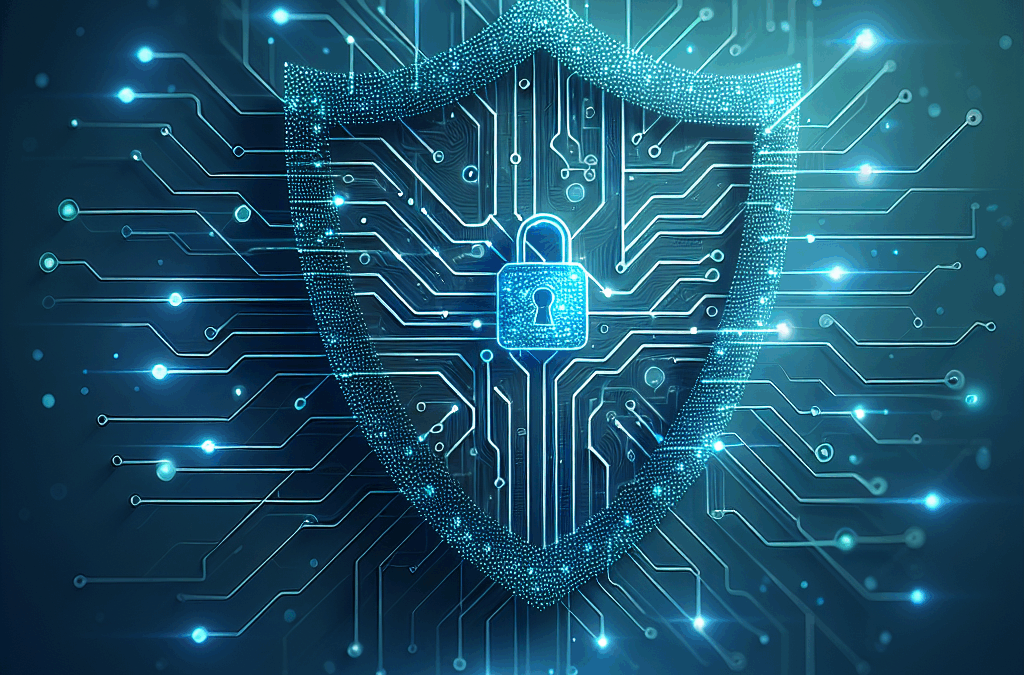It only takes one security breach to turn a growing small business into a cautionary tale.
In today’s digital world, keeping your company’s data safe has never been more important. But understanding the latest trends can feel overwhelming—especially if you don’t have a full IT department on call. That’s why we’ve broken down the most important cybersecurity developments in 2025 in a friendly, straightforward way.
Automated Threat Detection Becomes Your New Watchdog
Imagine having a guard dog that never sleeps, sniffs out trouble instantly, and learns new tricks every day. That’s what automated threat detection does for your network.
This trend centers on software tools that continuously scan for unusual activity—everything from strange login attempts to hidden malware. Instead of relying on a human to spot red flags, these tools raise alerts the moment something looks off.
- Faster response times. An automated system can shut down a suspicious process within seconds.
- 24/7 coverage. No coffee breaks, no weekends off—your network is always monitored.
- Scalability. Whether you have five employees or fifty, the same system can handle it all.
Real-world example:
Think of automated threat detection like a motion-sensor alarm in a store warehouse. It doesn’t wait for someone to notice the door is ajar—it simply sets off the siren the second motion is detected. In the cybersecurity world, that means threats get contained before they spread.
Zero Trust Architecture Goes Mainstream
“Never trust, always verify” used to be a catchy phrase. In 2025, it’s becoming the standard. Zero Trust means every user, device, or application must prove it has permission before accessing company resources—no exceptions.
Why it matters for small businesses:
1. You likely work with remote teams or outside vendors.
2. Guests may connect to your network—whether at a co-working space or your office.
3. Stolen credentials are a top cause of breaches.
By applying Zero Trust, you minimize the chance that someone with a valid password but malicious intent can roam freely through your systems.
Analogy:
Picture a secure office building where every person checks in at reception, scans their badge at locked doors, and has separate permissions for each floor. Without that badge, access is blocked. In the same way, Zero Trust limits who can see and change what on your network.
Secure Hybrid and Remote Work Environments
With remote and hybrid work here to stay, small businesses must rethink network boundaries. The “four walls” of the office no longer contain all your data.
Key points to watch:
- Virtual Private Networks (VPNs) are evolving into secure access service edge (SASE) solutions that combine networking and security in a cloud-based package.
- Endpoint protection now includes not just laptops, but mobile devices, printers, and even Internet-of-Things gadgets.
- User training is as vital as firewalls—employees should know how to spot phishing emails and handle sensitive files.
Real-world comparison:
Imagine your team working from cafes, home offices, or shared workspaces. Each location is like a different home with its own front door locks and alarm systems. To keep everything protected, you need a consistent security plan that travels with your data, not just the office router.
Cybersecurity as a Service Levels the Playing Field
Historically, advanced security measures were reserved for larger organizations with deep pockets. In 2025, expect “Cybersecurity as a Service” (CaaS) offerings to close that gap.
What you get with CaaS:
1. Expert guidance without hiring a full cybersecurity team.
2. Predictable subscription pricing—no surprise bills when something goes wrong.
3. Regular updates and patches managed by specialists.
Think of it like outsourcing your lawn care rather than buying all the tools and learning the tricks yourself. You still get a pristine yard, but you save time, effort, and upfront costs.
This approach empowers small businesses to implement the same protections that big corporations use—AI-driven monitoring, advanced threat intelligence, and continuous compliance checks—at a fraction of the investment.
Preparing for Privacy Regulations and Compliance
New privacy rules are on the horizon around the world, and small businesses are increasingly in their sights. Fines for mishandling customer data can be crippling.
Trends to watch:
- Data minimization. Only collect and store what you actually need.
- Transparent privacy policies. Clearly tell customers how their data will be used.
- Regular audits. Automated tools can check that your systems align with the latest rules.
Consider it like passing a home inspection before selling. By addressing potential issues ahead of time, you avoid major problems—and legal headaches—down the road.
Building a Culture of Security
Technology alone isn’t enough. The most resilient companies blend tools with people-focused practices.
Steps you can take:
1. Schedule brief, regular training sessions to keep everyone up to date.
2. Celebrate security wins—like spotting a phishing attempt—to reinforce good habits.
3. Appoint a “security champion” on your team who can answer basic questions and keep momentum going.
When everyone feels responsible for protecting the business, you create an environment where threats are spotted and stopped faster.
Conclusion
Staying ahead of cybersecurity trends is essential for protecting your small business’s future. From automated threat detection to Zero Trust strategies and flexible security services, 2025 brings tools that level the playing field—so you can focus on growth, not breaches.
Learn more about NT Cyber Shield

